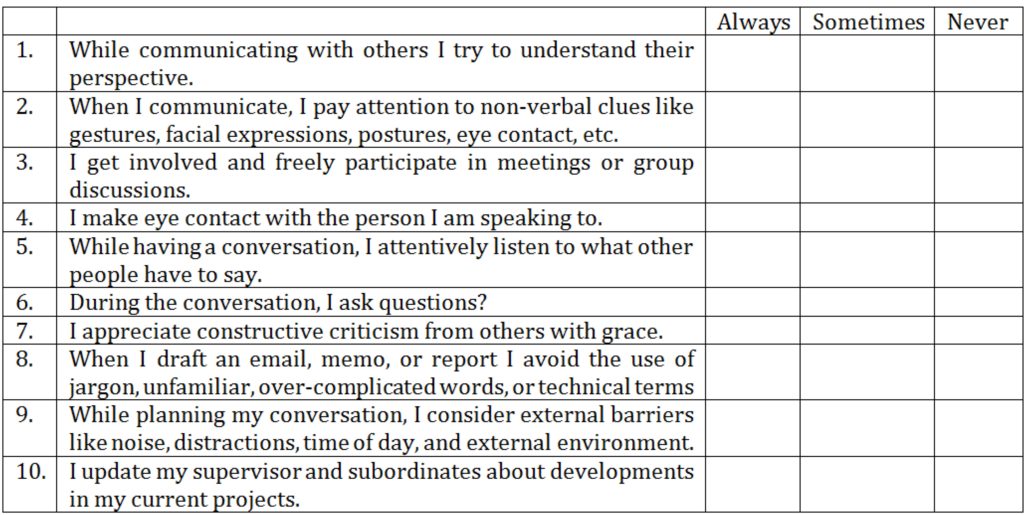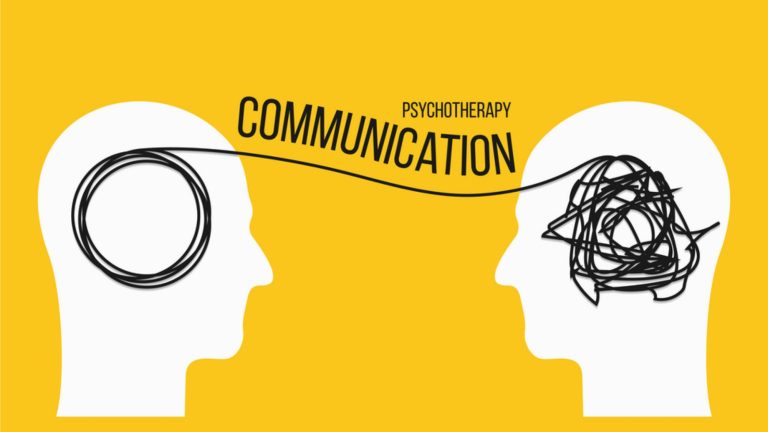“Communication works for those who work at it” – John Powell.
Please answer the below questions as honestly as you can to test your communication skills.
If most of your answers are:-
Always. Congratulations, you demonstrate good communication skills in the real world scenario.
Sometimes. Through regular practice, you can hone, intensify, expand, and perk up your skills to become better at them.
Never. Don’t worry! The first step of self-improvement is identifying your weakness and developing strategies to overcome them. You can sharpen your skills by taking online training courses, reading something new every day, practicing active listening, developing non-verbal clues, seeking feedback, practicing public speaking, and building your written communication skills and I am sure you will get better results every day.
Also Read: Decoding the Future of HR and Hiring in Post-covid period : Lalit Singh
In 2014, a survey by About.com revealed that the top three reasons for quitting the job were all communication-related- a lack of direction from management, poorly communicated constant change, and overall, poor communication in the workplace. Another study by Udemy Global Skills Gap discovered that 63% of participants in India suggested that their employers value soft skills in addition to technical and digital skills and amid which communication skills are the most desired skills and its significance is constantly increasing in these times of virtual workplace. Few demonstrated potential benefits of efficient and clear communication in management are:-
- It facilitates decision-making and problem-solving.
- It provides a sound basis for planning and controlling.
- It coordinates harmonious functioning for effective results.
- It encourages the exchange of new views, ideas, and suggestions.
- It motivates employees and boosts their morale.
- Finally, it builds a culture of trust, teamwork, loyalty, employee engagement, and innovation.
In this article, I will discuss 5 common communication challenges in the workplace and a few simple tips to address them:-
By failing to prepare, you are preparing to fail-
Preparation is the key to effective communication. Before any communication process-
- It is vital to identify the communication objective,
- Evaluate your audiences based on the level of needs, interest, and style,
- Select the most vital issues, and concerns the audiences are likely to have,
- Accordingly, plan your desired message,
- Analyze various channels for delivering your messages,
- Evaluate and select the most appropriate one,
- Get timely feedback on the communication to ensure whether the receiver understood the message you wanted them to hear.
- By adopting the above techniques, the right audiences receive the right information at the right time.
Another study by Udemy Global Skills Gap discovered that 63% of participants in India suggested that their employers value soft skills in addition to technical and digital skills and amid which communication skills are the most desired skills and its significance is constantly increasing in these times of virtual workplace.
Incomprehensible jargon is the hallmark of professionals-
In many cases, business jargon is used to astonish not to information which can often confuse. Eliminate business jargon like boil the ocean, robust, punt, over the wall, lots of moving parts, low-hanging fruit, jump the shark, blue-sky thinking, S.W.A.T team, gain traction, Aha moment, silver bullet, hard stop, move the needle, food chain, circle back, reinvent the wheel, straw man, to name a few. Instead use strong, clear, and accurate words that reflect the concepts/ideas accurately. Simple and understandable language eliminates barriers between the sender and the receiver.
Keeping conversation simple is not always easy but worth the effort!
We don’t listen to understand. We listen to reply-
In communication, listening is the ability to receive, interpret, and understand the message accurately and concisely. Inattentiveness, jumping to conclusions, constantly interrupting the conversation, Pseudo listening (Pretend to listen), Selective listening (replying only on topics of particular interest), eavesdropping (secretly listening), narcissistic listening (self-centered or self-absorbed listening), defensive listening (taking comments personally), insulated listening (ignoring or avoiding a topic), aggressive listening (listening to gather information to trap or attack the speaker), and passive listening (listening without reacting) are signs of the poor listener.
To be a better listener eliminates physical, mental, auditory, and visual distractions as much as possible.
You can tell a lot by someone’s body language-
Prof. Albert Mehrabian’s 7-38-55 rule states that only 7% of the message is communicated through spoken words, 38% through tone of voice, and 55% through body language. Yes, you read it right. 93% of communication happens through non-verbal means. Body Language is a form of non-verbal signals that includes our gestures, eye contact, posture, touch, facial expression, mannerisms, and kinesics that we use to communicate our emotions and intentions. Body language is the same in all cultures. Maintaining confident eye contact, nodding head while listening, firm handshake, standing with spine erect, having an open palm, maintaining a pleasant facial expression, having an upright and open posture, occasional smile, using appropriate tone of voice are some examples of positive body language.
Body language speaks louder than words.
Feedback is the breakfast of champions-
Honest feedback is an integral part of communication as it allows the sender of the message to evaluate the effect of the message and identify whether the receiver has understood the message and interpreted it correctly. According to a Harvard study, more than 70% of the respondents believed that work productivity and performance would grow if employees provide feedback. It further added that more than half had the same opinion that constructive evaluation is much better than merely highlighting successes and qualities.
Feedback can be non-verbal (a gentle smile, pat on the back. Or a nod of the head), verbal (written or oral comments/suggestions), or even non-response is feedback.
To conclude, effective powerful communication not just informs, persuades, and motivates but binds people together too.
























